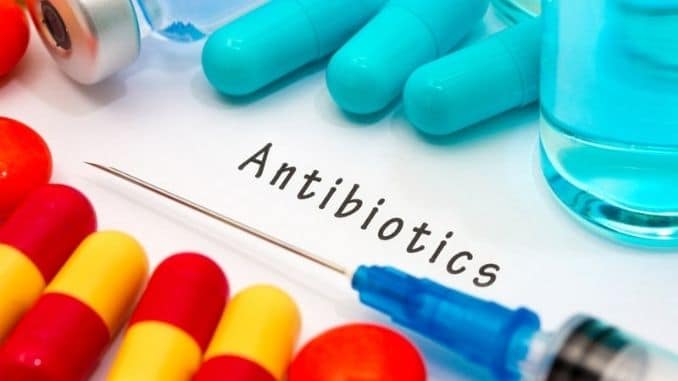
There’s no disputing that antibiotics are lifesaving medications that have both increased the life expectancy of the world’s population and given many a better quality of life. On the whole, antibiotics have done much more good than harm for countless individuals.
For all of the incredible benefits of antibiotic medications, there are some common side effects of antibiotics to the drugs. Physicians often prescribe antibiotics as a precautionary measure during minor surgeries. In addition, antibiotics are sometimes prescribed as an exploratory treatment to help diagnose an illness. Many times, they’re also prescribed for viruses like the common cold as antibiotics do not cure viruses.
Antibiotic medications often come with unwanted side effects — some quite serious, others just a bit annoying. We’ve compiled a list of some of the more common adverse effects of antibiotics. We’ll also recommend a couple of natural alternatives that may relieve your symptoms without the usual risks associated with antibiotics.
1. Nausea, Diarrhea and Overall Digestive Problems
One of the most common side effects of antibiotics use is digestive upset. Antibiotics are designed to fight bacterial infections by killing bacteria in the body or inhibiting the growth of bacteria. Sadly, antibiotics don’t play favorites. The drugs will kill both harmful and beneficial bacteria, thus disrupting the delicate balance of gut microbes in the body.
It isn’t uncommon for patients to experience profound nausea, diarrhea, bloating and other digestive problems while taking antibiotics. Some digestive problems can persist long after the prescription has been finished.
Toward the end of a course of antibiotics, patients should begin taking a high-quality probiotic supplement. Probiotic consumption should continue for at least a month after taking the antibiotic. Prebiotic foods like garlic, onions and bananas are also very good for restoring gut health after antibiotic therapy.
2. Yeast Infection and Candida Overgrowth
Dr. Jeffrey McCombs, the author of “The Everything Candida Diet Book,” wrote, “Antibiotics and candida — the two go hand-in-hand. Nothing else is guaranteed to create a systemic candida fungal infection in the body as fast or as effectively as antibiotics.”
Candida is a perfectly normal type of yeast present in the gut flora of most people. It generally exists peaceably with all the other microorganisms in the digestive tract. However, certain things can feed candida and cause an overgrowth of yeast in the body. Antibiotics kill off good bacteria and foster an environment that’s optimal for the rapid overgrowth of candida.
It doesn’t take long for antibiotics to cause a candida overgrowth and infection. Dr. McCombs said, “In five to seven days, antibiotics can wipe out all the bacteria in the body. It then takes candida as little as 5 to 52 hours to spread systematically. No other drugs, with the exception of chemotherapy, enable candida to multiply and spread so rapidly.”
Signs of Candida overgrowth include yeast infections, brain fog, fatigue, abdominal pain, gas and weight gain. If you must take antibiotics, be sure to avoid sugar — which feeds candida — and replenish the stores of friendly bacteria in your digestive system by taking a probiotic.
3. Itchiness, Hives and Skin Irritation
Amoxicillin, an antibiotic in the penicillin family, often causes a rash in children and adults. While some people are legitimately allergic to penicillin, others experience a maculopapular rash, characterized by flat, red patches on the skin. A maculopapular rash doesn’t indicate an actual allergy to penicillin; rather, it’s a common side effects of antibiotics that can be treated with an over-the-counter antihistamine. Normally, when a minor rash like this occurs during a course of antibiotics, your doctor will advise you to continue taking the antibiotic and while you treat the rash with an antihistamine.
Hives, on the other hand, are raised, itchy, red, pink or white bumps on the skin that appear after the first couple of doses of antibiotics. Hives indicate an allergy to the medication and require immediate medical attention. If you experience hives when you’re taking any medication, discontinue the use right away and see your doctor.
According to Healthline, about 10 percent of the population report an allergy to penicillin drugs. Many more people experience a maculopapular rash (also known as an amoxicillin rash) when taking the antibiotic. Children are particularly prone to break out in a rash during antibiotic treatment. When taking antibiotics for the first time, make sure you have an antihistamine on hand to treat a rash or allergic reaction.
4. Liver Damage
It isn’t incredibly common but more than any other prescription drugs, antibiotics can cause damage to the liver. This type of liver damage occurs more often in diabetics and those who have been taking antibiotics for a long period of time.
If you are diabetic and have been taking antibiotics or if you have just finished a long course of antibiotic therapy, you should definitely talk to your doctor about a liver function test. It’s a simple blood test that can identify liver damage.
5. Photosensitivity
Certain antibiotics like tetracycline can cause your body to be extra sensitive to light. You may be more prone to sunburn while you’re taking this antibiotic. Bright lights may bother your eyes.
Take measures to stay out of the sun while you’re taking these antibiotics. If you have to be in the sun while you’re taking them, use sunscreen and sunglasses. Wear a hat and sun-protective clothing. Drink plenty of water. Once you are finished taking the antibiotic, the photosensitivity will go away.
6. Tooth Discoloration
Tetracycline and doxycycline can cause permanent tooth discoloration and staining in children if their teeth are still developing. Staining and discoloration can also affect children in the womb if their mothers take these types of antibiotics during pregnancy.
Don’t take tetracycline or doxycycline when you are pregnant or nursing. Do not allow your children to take this medication. If your doctor prescribes it, make sure to inquire about the risks. Ask your doctor if there are any other alternatives.
7. Heart Problems
Some antibiotics like erythromycin or ciprofloxacin can cause low blood pressure or an irregular heartbeat. Both of these heart conditions can cause dizziness, trouble breathing and chest pain.
If you have heart problems already and your doctor prescribes erythromycin or ciprofloxacin, ask your doctor about your risk factors. If you experience any of the above symptoms while you are taking these types of antibiotics, call 911 and seek medical attention immediately.
8. Thrush
In the same way that antibiotics can cause candida overgrowth in the digestive tract, it can also cause a condition called thrush in the mouth and throat. Thrush is a fungal infection of the mouth that is caused by candida overgrowth. Symptoms of thrush include creamy-white patches on the mouth, throat, tongue and occasionally the gums and lips. Thrush also causes soreness, pain and swelling in those areas. It can be very difficult to eat and swallow when you’re suffering from thrush.
If you experience symptoms of thrush during or immediately after antibiotic use, contact your doctor. It’s also helpful to take probiotics during a course of antibiotic treatment and afterward. Cold plain yogurt can help soothe the effects of thrush and add beneficial bacteria back into your body.
9. Antibiotic Resistance
The Centers for Disease Control and Prevention (CDC) calls antibiotic resistance one of the biggest public health challenges of our time. Antibiotic resistance occurs when the harmful bacteria in the body changes and becomes able to resist certain antibiotic therapies. According to the CDC, every year at least 23,000 people die from an antibiotic-resistant infection.
Each time you take an antibiotic, certain bacteria are killed off. However, some stronger bacteria may be left behind. These germs are resistant to the antibiotic, and they are left to multiply. This bacteria can spread to others and cause infections that some antibiotics will not be able to cure. One well-known example is Methicillin-resistant Staphylococcus aureus (MRSA). It causes a staph infection that is not responsive to many common antibiotics.
Antibiotic resistance can be prevented by using antibiotics only when necessary. Also, when you have prescribed an antibiotic, finish the entire prescription — even after you begin to feel better. Don’t take antibiotics for viruses or the flu. Don’t pressure your doctor to prescribe an antibiotic when you are sick.
Natural Alternatives to Prescription Antibiotics
Often, when you go to the doctor for any ailment, you’ll come home with a prescription for antibiotics. However, there are some natural alternatives to antibiotic therapy that are safe and effective and come with little to no harmful side effects of antibiotics.
A. Garlic
One of the most powerful herbal antibiotics is garlic. It can eliminate several different types of bacteria. Allicin is the powerful antibiotic oil in garlic that gives it these properties. When you’re feeling sick, peel five cloves of garlic. Chop the cloves into small, pill-sized pieces. Then, swallow them down with a tall glass of water. For quicker relief, mince the five cloves and put them on top of some hummus or salsa. Eat the dip with chips and chew it well. The garlic will enter your bloodstream more rapidly and help you sooner. Either way, garlic can offer the benefits of an antibiotic without the unwanted side effects of antibiotics
B. Oil of Oregano
Another potent natural antibiotic is the oil of oregano, also known as nature’s antibiotic. Oil of oregano has been shown to kill several types of bacteria, parasites, and even certain types of cancer cells. It can be taken orally. Just five drops in a shot of water three times a day will help clear up a bacterial infection. Note that oil of oregano is not the same as oregano essential oil. Look for oil of oregano in your local health food store.
I have had success treating my family with both oils of oregano and garlic on multiple occasions. Once, I even used garlic in preparation for a minor surgery instead of the antibiotic my doctor had prescribed. Another time, after I was bitten by a black widow spider, I used both garlic and oil of oregano to help me avoid an infection from the bite. These natural antibiotics worked beautifully, and I did not require the standard antibiotic shot that’s generally administered to treat a venomous spider bite.
The awesome benefits of antibiotics are countless. I would never want to live in a world without these valuable, effective medications. Nevertheless, we need to be cautious and well-informed when taking antibiotics. While they can eliminate diseases and provide healing, antibiotics can also cause negative side effects. Use antibiotic therapy wisely and only when absolutely necessary.
For your guide to the best foods to heal your body, check out The Best Foods that Rapidly Slim & Heal in 7 Days, here!
.




